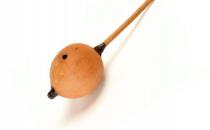
Catapults - Newton's second law

This online resource investigates Newton's second law of motion.
In this resource, details are given for a hands-on activity where students make a catapult to learn about Newton's second law of motion.
In the activity, students can observe the relationship between the angle of deflection of a catapult's arm (a force measurement) and the flight of a cotton ball. They can learn how Newton's second law of motion works by seeing directly that F = ma; when the metal "arm" of the catapult is pulled back further, thus applying a greater force to the cotton ball, it causes the cotton ball to travel faster and farther. Students can also learn that objects of greater mass require more force to result in the same distance travelled by a lighter object.
Engineering Connection
Understanding the scientific concepts of Newton's laws of motion has made it possible for engineers to build airplanes that fly, elevators and amusement park rides that are exciting but safe, cars that drive safely at high speeds and structures that do not collapse. Aerospace engineers save fuel by exploiting the second law when they let the planet's force of gravity pull a spacecraft towards the planet to increase its velocity, and then steer the spacecraft away from crashing into the planet.
Australian Curriculum v9 Codes: AC9S10U05 (Year 10)
- Year 10 > Science Inquiry Skills > Processing and analysing data and information > Analyse patterns and trends in data, including describing relationships between... > ACSIS203
- Year 10 > Science Understanding > Physical Sciences > The motion of objects can be described and predicted using the laws of physics > ACSSU229


